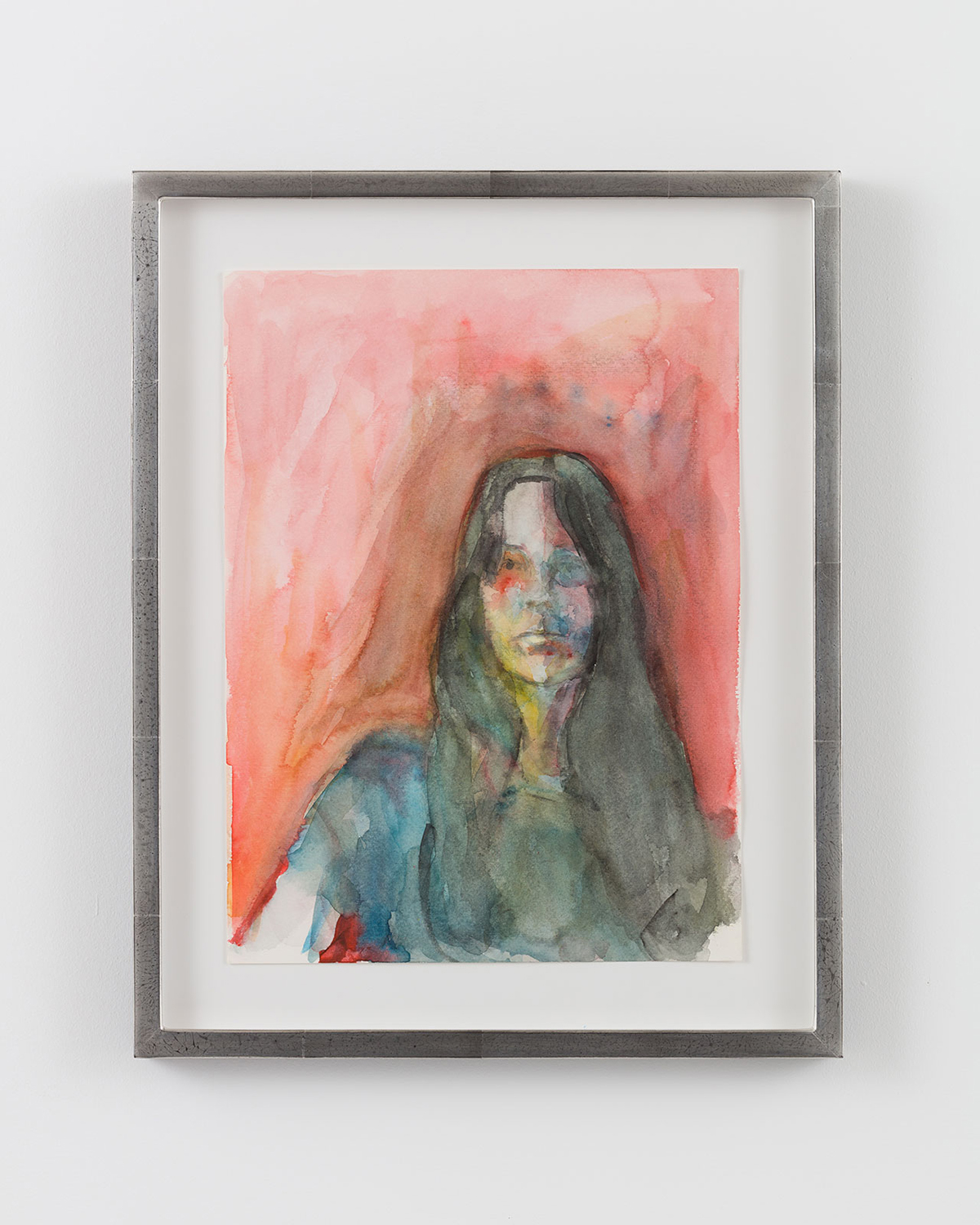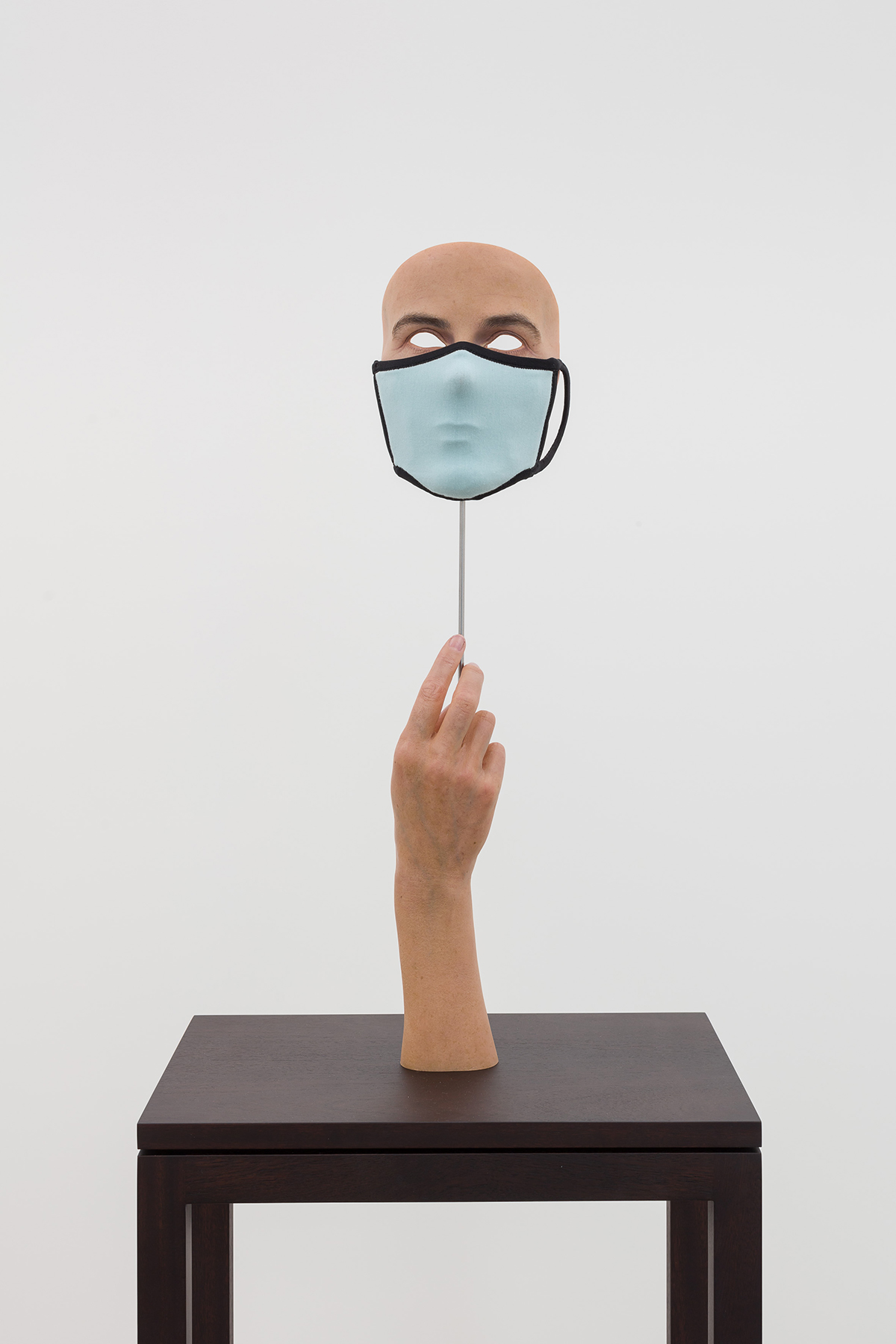
Gillian Wearing Lockdown exhibition view: Maureen Paley, London, 2020 © Gillian Wearing, courtesy Maureen Paley, London / Hove
Lockdown: a word that’s more familiar to most of us now than it was this time last year, and one that’s laden with personal and collective meaning. Taking the word as both title and subject, Gillian Wearing’s latest show at Maureen Paley, London is at once a deeply personal revelation of the artist’s creative response, and a wider, more complex meditation on self and the time in which we now live.
Follow LUX on Instagram: luxthemagazine
The artworks – a series of new self-portraits, a wax sculpture (Mask, Masked), and a video work (Your Views, 2013 – present) – are displayed in two rooms between which visitors’ movements are choreographed by notices on the walls prescribing physical distancing.

Lockdown Portrait 3, 2020 by Gillian Wearing, framed watercolour on paper, 39.5 x 31.5 x 2.6 cm © Gillian Wearing, courtesy Maureen Paley, London / Hove

Lockdown Portrait 5, 2020 by Gillian Wearing, framed watercolour on paper, 39.5 x 31.5 x 2.6 cm © Gillian Wearing, courtesy Maureen Paley, London / Hove
Wearing’s self-portraits, made in watercolour, are a product of the prolonged, enforced isolation brought on by the Covid-19 pandemic. A departure from the photography and videography she is famous for, these small-scale paintings bespeak the self-reflection, both literally and figuratively, which Wearing’s lockdown precipitated. ‘Having represented myself in photography both as myself and as others,’ Wearing writes, ‘I wanted to see how paint and even the manner of painting could change my appearance.’

Untitled (lockdown portrait), 2020 by Gillian Wearing, oil on board 30.5 x 40.5 cm © Gillian Wearing, courtesy Maureen Paley, London / Hove
It might be a new medium but the paintings bear all the marks of the artist’s best-known work: the tensions between public and private, between our inner and outer selves. Think ‘Signs that say what you want them to say and not Signs that say what someone else wants you to say’ (1992-93): the police officer whose card reads ‘HELP’. Here, it is Wearing’s own quizzical eyes staring over the viewer’s shoulder, lost in thought, her hair tied up or loose, torso loosely sketched. How do we construct our identities, these pictures ask, how do we perform them?
Read more: British artist Hugo Wilson on creating art from chaos

Mask Masked, 2020 by Gillian Wearing, fabric mask, wax sculpture, steel rod and wooden plinth, 56 x 14 x 10 cm © Gillian Wearing, courtesy Maureen Paley, London / Hove
Mask, Masked underlines this question in fleshy three-dimensions. A severed hand reaches skyward, holding a life-like mask of Wearing’s face, eyes removed to reveal the wall behind. Over the mouth and nose is a second mask, reminiscent of the now ubiquitous face coverings worn in public spaces. An impossible masquerade ball attendee, the uncanny sculpture makes manifest the layers of concealment, of fiction, at play in person-to-person interactions, another layer added by the culture of the pandemic.
In a second room, Your Views, Wearing’s open-submission video work, brings together short clips of contributors’ ‘views’ from homes throughout the world, revealed when curtains or blinds are drawn back. Using footage taken during lockdown, including the ‘clap for carers’ celebrations, Your Views is a collage of lived experience. Rather than examine a face, this time the viewer tries on others’ masks, looks out onto the unfolding world. You might not see yourself in Wearing’s lockdown, her artistic response to its solitude, but the artist demonstrates your response has been creative too: your views are here, you are not alone.
‘Lockdown’ by Gillian Wearing runs until 25 October 2020. The exhibition is open by appointment. For more information visit: maureenpaley.com
Tom Cornelius










Recent Comments